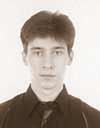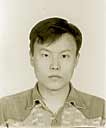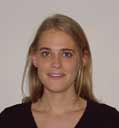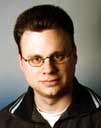Katerina KATSIKATSOU
University of Athens
kkatsik@phys.uoa.gr

Victoria KEKELIDZE
JINR, Dubna
vika@sunhe.jinr.ru

Fot my Ph.D. thesis I am working in the area of software developement and data processing at physics experiments. I have taken participation in software developement in C++ for event reconstruction in NEMO-3 experiment (Modane, France) studing double beta-decay. In summer 2000 and winter 2001 I have been working on HERA-B experiment (DESY, Hamburg). HERA-B is a large-aperure high-rate spectormeter built for studes of collisions of 920 GeV protons with the nuclei of target wires positioned in the halo of the HERA proton beam. HERA-B was optimized to measure CP-violation in decays of B mesons into the so-called 'golden decay mode'. I have taken part in developement of C++ vertexing package "GROVER" and alignment package "AliSA" for outer tracker system. At peresnt I am working on ALICE (A Large Ion Collider Experiment). The detector of ALICE is dedicated to study nucleus-nucleus collisions at the LHC. It will investigate the physics of strongly interacting matter at extreme energy densities, where the formation of a new phase of matter, the quark-gluon plasma is expected. I am involved into activity connected with a tracking for the muon spectrometer of ALICE.
Dmitri KHARTCHENKO
Joint Institute for Nuclear Research, JINR, Dubna
dmitry@nusun.jinr.ru

Sergey KONONOV
Budker Institute of Nuclear Physics, Novosibirsk
skononov@inp.nsk.su

Aafke KRAAN
The Niels Bohr Institute, Copenhagen
ackraan@nbi.dk

In my PhD work I am involved in both ALEPH, one of the four LEP detectors, and ATLAS, one of the four LHC detectors. Currently I am performing an ALEPH data-analysis on LEP2-data, looking for signals of a light stable gluino, the supersymmetric partner of the gluon. I investigate the production channel via stop decay. A stable gluino, as arises in some SUSY models, will hadronize to form so-called R-hadrons. The most important aspect of this search is the simulation of the Monte-Carlo signal sample, involving simulation of gluino production, their subsequent hadronization, and interaction with the detector. In ATLAS, I will perform a similar search.
Olaf KRASEL
Universität Dortmund
olaf.krasel@cern.ch

Uladzimir KRUCHONAK
Joint Institute for Nuclear Research, Dubna
v_kruch@nusun.jinr.ru

I am working in group of producing muon system of ATLAS detector. Experiment ATLAS will be delivered in CERN on LHC accelerator and will be considered of proton-proton collisions in energy range ~ 10 TeV. Muon system must independently from other systems of detector determine impulse 1 TeV muon which accuracy 10 %. The participation of JINR in ATLAS experiment is necessary to make about 50000 drift tubes for MDT-chambers for muon system of the ATLAS detector. The leak of gas from the detector should not exceed 1.33*10-8 Bar*l/s. For measurement of so small flow of gas the method of mass-spectrometry as the most sensitive is chosen. The process of measurement should be fast (2-3 minutes) and as much as possible automated. My own work consists in creation of the automated gas leak stand exact measurement of gas leak from working volume drift tubes .